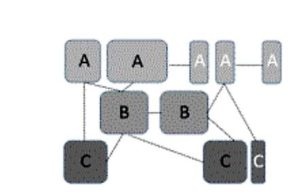An important concept to consider when developing learning and development training programs is the process through which we retain new information. Learners go through various peaks and valleys as they accumulate and implement knowledge. A peak occurs when someone “gets it,”develops clarity and can easily retrieve needed information or demonstrate a skill. We often see this happen early in learning and development training.
However, as learners continue along their journey, new information takes over their short-term memory, and their mental model—or schema—begins to falter. Simple concepts they could easily retrieve become complex, disparate parts that make little or no sense.
Perhaps the best way to explain this is through a story from my personal life. A few years ago, when my son was younger, he was learning to speak Russian. He was doing really well at carrying on simple conversations, and I decided to show off his language skills to some friends who were visiting. I asked my son a few questions in Russian, and he quickly answered every time. I was a proud father—my son was obviously a genius.
A month or so passed, and the same friends came over for a barbecue. Once again, we talked about my son’s language abilities, and I bragged that he had now learned conjugations. They wanted to see his progress. We called him over, and to warm him up, I asked him a few simple questions. But this time, he couldn’t respond. He tried three times before conceding that the information he had known so well only weeks before had somehow disappeared.
An important concept for organizations to take from this story and apply to the leadership development process is that human learning is not linear. An employee may not learn A, then B, and then C (see below). This is especially true for developing how-to-think workers.
![]()
Sometimes we learn about A, a bit of B, and then more about A, and then we are ready for C, which may drop us back to understanding different questions about B. The learning continuum in the diagram shown below looks more like an interconnected web than a line.

Professionals in top leadership programs who are acquiring new ideas or information reach points where they recognize the gaps in their thinking. As a result, there is a temporary period in which their minds “step back” and try to fill those gaps and re-create a new schema. This is what happened to my son the second time I asked him questions. With so much more information flooding his brain (conjugations), his memory struggled to form new answers to old questions.
Dr. Paul Camp, a professor at Georgia Institute of Technology, who for more than 30 years has been studying the ways we learn, best describes this “U-shaped” development curve in learning and development training:
The notion that performance always improves with time, that the more you learn, the more you know and the more you know the more you can do, is as close to an accepted law of nature as it is possible to come in education research. It is deeply ingrained in all aspects of almost every pedagogical approach. It governs the linear development of ideas in the writing of textbooks and the design of courses and activities. It also governs the evaluation of all of these activities through reliance on pre/post testing. However, as a law, it appears that it may have the same scientific status as the medieval impetus theory. The unspoken notion that you never get worse as you continue to learn has to be called into serious question by the phenomenon of U-shaped development.
In my next post, I’ll discuss how this learning curve fits in the context of learning and development training and how it comes into play in our business simulations.
Michael Vaughan is the CEO of The Regis Company, a global provider of custom business simulations and experiential learning programs. Michael is the author of the books The Thinking Effect: Rethinking Thinking to Create Great Leaders and the New Value Worker and The End of Training: How Business Simulations Are Reshaping Business.